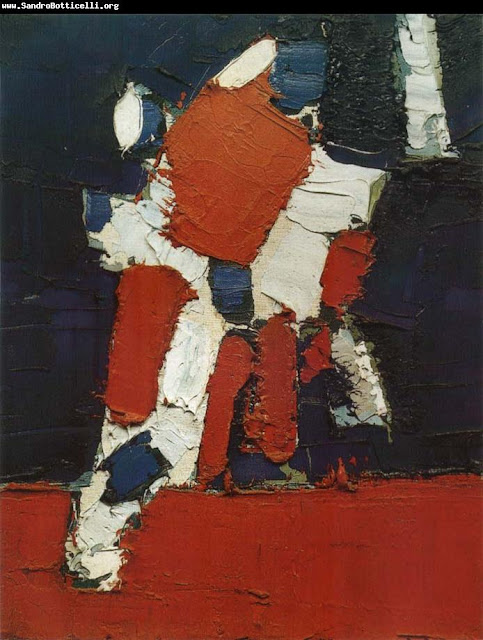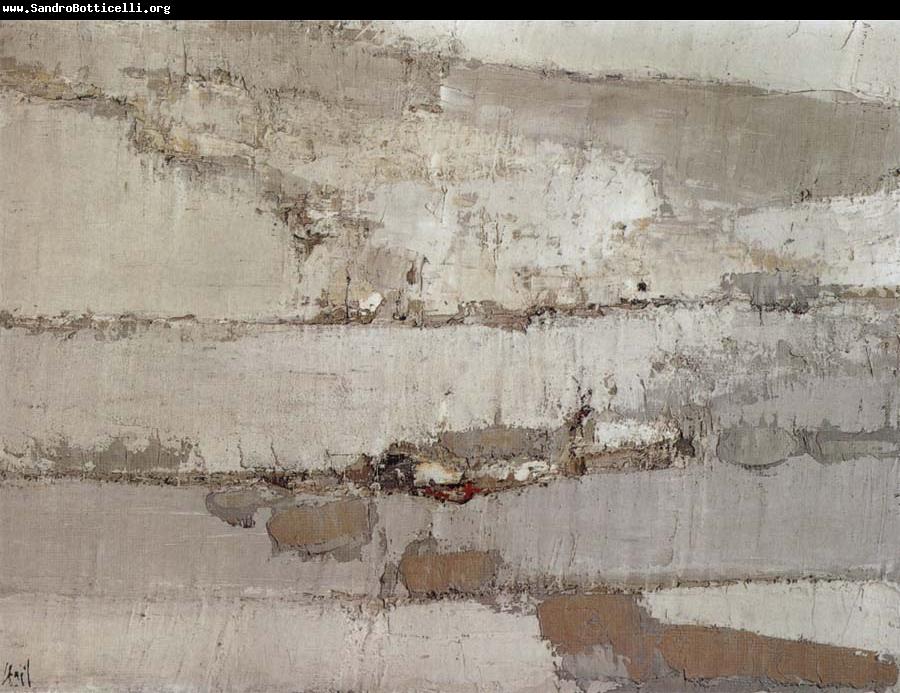mid century hip
Nicolas de Staël
1914-1955
All my life, I had a need to think painting, to paint in order to liberate myself from all the impressions, all the feelings, and all the anxieties of which the only solution I know is painting.
- Nicolas de Staël
de Staël was considered a French painter of Russian birth. He was born into an aristocratic family forced into exile in 1919 in Poland as a result of the Russian Revolution. In 1922, orphaned, he and his two sisters were sent to Brussels. He studied in Brussels, at the Académie de St Gilles and at the Académie Royale des Beaux-Arts. In the 1930s, he traveled throughout Europe, lived in Paris (1934) and in Morocco (1936) (where he first met his partner Jeannine Guillou, also a painter) and Algeria. In 1936 he held his first exhibition (Brussels, Gal. Dietrich), showing works in a Byzantine style. In 1941, he moved to Nice where he met Jean Arp, Sonia Delaunay and Robert Delaunay, and these artists would inspire his first abstract paintings, or "Compositions". Jeannine died in February 1946. De Staël met Francoise Chapouton in the spring of 1946, and they married in May. De Stael's studio in Paris was very close to Georges Braque's and the two painters became very close friends.
His paintings began to attract attention worldwide. In 1950 he had a one-man exhibition at the Galerie Jacques Dubourg in Paris. He sold several paintings to important collectors including Duncan Phillips of the Phillips Collection. He had considerable success in the United States, and England in the early 1950s. In 1950 Leo Castelli organized a group exhibition at the Sidney Janis Gallery in New York City that included his works. De Staël while visiting New York met the art dealer Paul Rosenberg who offered de Staël an exclusive contract. But by 1953, de Staël's depression led him to seek isolation in the south of France (eventually in Antibes). In the 1955 he committed suicide. He leapt to his death from his eleventh story studio terrace. He was 41 years old.
de Staël in his studio circa 1954
LOOK AROUND YOU.
CITY STREETS de Staël STYLE, SWEET!
a.
b.
c.
d.
His abstract work is based on thick superimposed layers of paint, always with the wish to play with materials and colors. As proof, black was for him as light itself.
de - END.





.jpg)










































